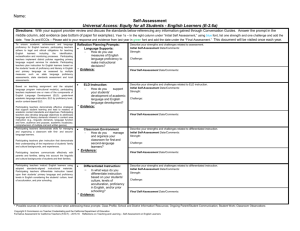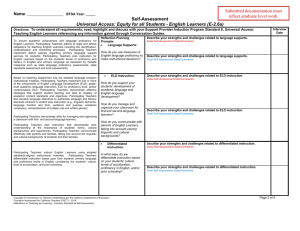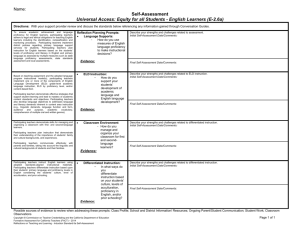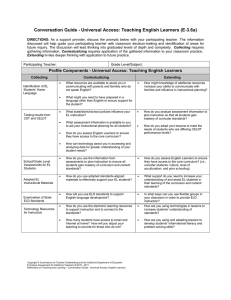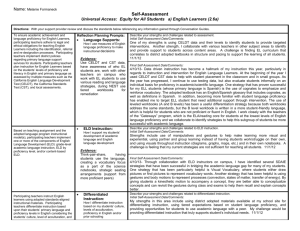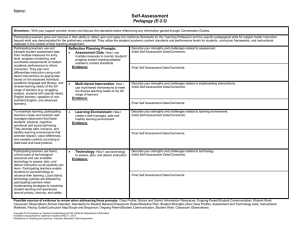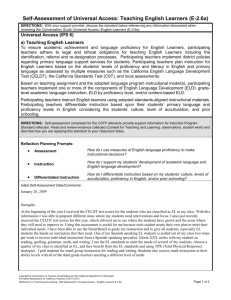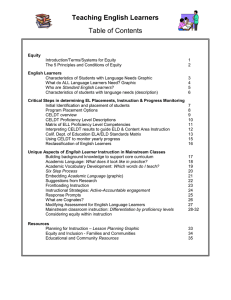Self-Assessment Name: Universal Access:
advertisement
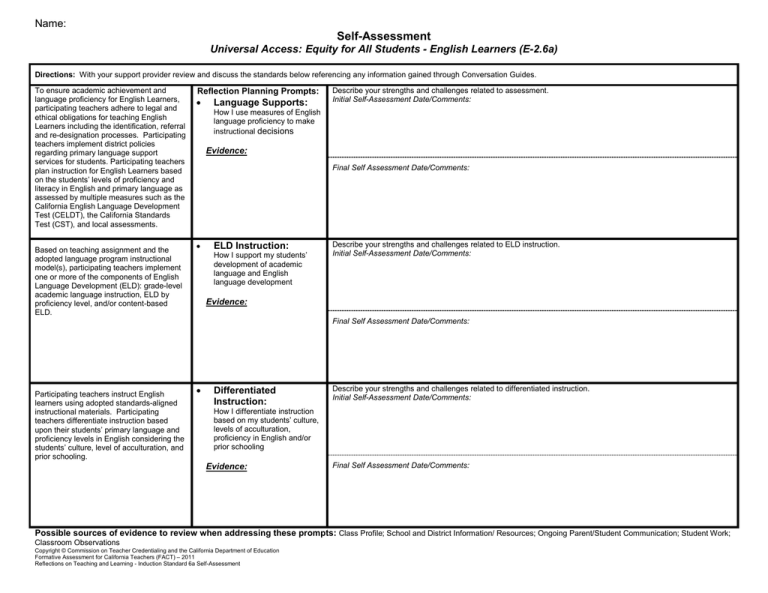
Name: Self-Assessment Universal Access: Equity for All Students - English Learners (E-2.6a) Directions: With your support provider review and discuss the standards below referencing any information gained through Conversation Guides. To ensure academic achievement and language proficiency for English Learners, participating teachers adhere to legal and ethical obligations for teaching English Learners including the identification, referral and re-designation processes. Participating teachers implement district policies regarding primary language support services for students. Participating teachers plan instruction for English Learners based on the students’ levels of proficiency and literacy in English and primary language as assessed by multiple measures such as the California English Language Development Test (CELDT), the California Standards Test (CST), and local assessments. Based on teaching assignment and the adopted language program instructional model(s), participating teachers implement one or more of the components of English Language Development (ELD): grade-level academic language instruction, ELD by proficiency level, and/or content-based ELD. Reflection Planning Prompts: • Language Supports: Describe your strengths and challenges related to assessment. Initial Self-Assessment Date/Comments: How I use measures of English language proficiency to make instructional decisions Evidence: Final Self Assessment Date/Comments: • ELD Instruction: How I support my students’ development of academic language and English language development Describe your strengths and challenges related to ELD instruction. Initial Self-Assessment Date/Comments: Evidence: Final Self Assessment Date/Comments: Participating teachers instruct English learners using adopted standards-aligned instructional materials. Participating teachers differentiate instruction based upon their students’ primary language and proficiency levels in English considering the students’ culture, level of acculturation, and prior schooling. • Differentiated Instruction: Describe your strengths and challenges related to differentiated instruction. Initial Self-Assessment Date/Comments: How I differentiate instruction based on my students’ culture, levels of acculturation, proficiency in English and/or prior schooling Evidence: Final Self Assessment Date/Comments: Possible sources of evidence to review when addressing these prompts: Class Profile; School and District Information/ Resources; Ongoing Parent/Student Communication; Student Work; Classroom Observations Copyright © Commission on Teacher Credentialing and the California Department of Education Formative Assessment for California Teachers (FACT) – 2011 Reflections on Teaching and Learning - Induction Standard 6a Self-Assessment
